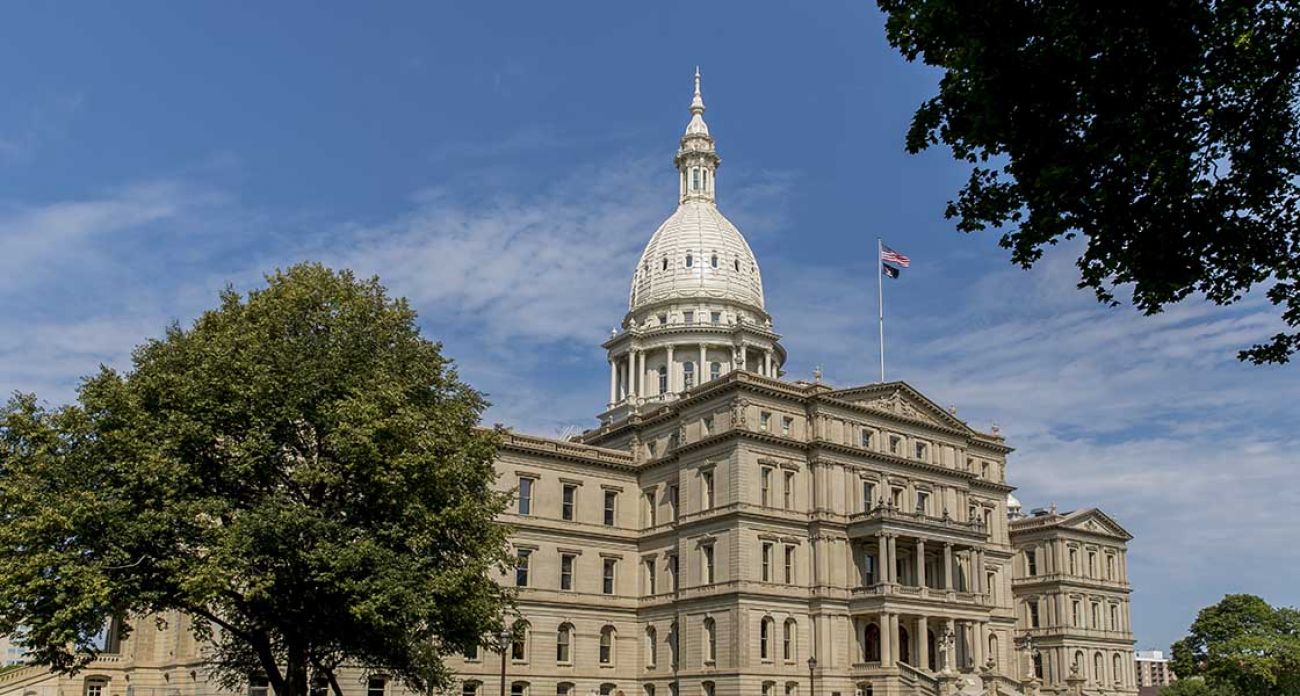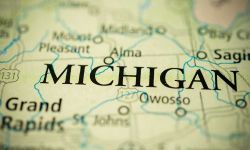Michigan employs 48K people. A quarter of them work in prisons.

Michigan government is a big enterprise: A $60 billion annual operation with 48,436 employees that touches virtually every facet of residents’ lives. The state government has a role and regulates everything from flushing toilets and driving on roads to education and breathing fresh air.
Perhaps surprisingly, the governor and the state’s 148 legislators have direct control of only about 18 percent of the budget, the $10.7 billion in the general fund. The bulk of the budget, some 41 percent, comes from federal grants.
Biggest expenses
Nearly half of total spending, $4 per every $10, goes to K-12 education.
In the general fund, two big expenses – public safety and health and human services – account for 60 percent of spending, while higher education gets 15 percent, while all other departments get the rest.
On average, state civil service workers make $64,000 per year and tend to be women, outnumbering men 54 percent to 46 percent. The state has 48,436 workers, nearly half of whom work in either corrections (12,000 employees) or health and human services (10,723).
The governor’s office has 84 workers, according to the state budget office.
Status quo
Although tax revenue has increased, Michigan in many ways is still dealing with the fallout from the Great Recession, when the state lost population for the first time (55,000 residents) and tax revenue plummeted.
Those losses and tax cuts have left Michigan’s general fund of $10.7 billion virtually unchanged from 20 years ago, despite a 50 percent inflationary increase in costs, according to the left-leaning Michigan League of Public Policy.
Michigan ranked 35th nationwide in per-capita state spending at $5,459 in fiscal year 2017, below the national average of $5,976, according to the Kaiser Family Foundation, a health advocacy group that analyzed data from the National Association of State Budget Officers.
Michigan is in the middle of the pack, meanwhile, in per-capita education spending: $13,016 per student, compared to the national average of $12,756, according to the periodical Education Week.
Republicans point out that state budgets increase every year, and Michigan is still spending $1 billion plus per year on improving roads from a 2015 plan that raised car registration fees.
In fact, they argue, the state is spending more on roads now than ever, when adjusted for inflation.
2020 Michigan Fact & Issue Guide
- Michigan could decide presidency. These are the facts that shape our state.
- 50 facts that frame Michigan, from health care and poverty to crime
- Michigan K-12 test scores slowly improving, but remain mediocre at best
- Early childhood education is key to success. Michigan still has work to do.
- Michigan college tuition hikes leave average graduate with $35K in debt
- Jobs up, poverty declines as Michigan emerges from Great Recession hangover
- Incomes climb in Michigan, but state still struggles with loss of manufacturing
- Michigan has great access to health care. Health outcomes are another story
- Michigan’s cherished Great Lakes, clean waters face threats from all sides
- Michigan roads are infamously bad. But sewers and dams are in rough shape too
- Michigan doles out more in business tax breaks than it spends on schools
- Nearly 200 Michigan communities are financially distressed, despite economy
- Michigan is a toss-up state again after favoring Democrats for a generation
- Michigan voters may weigh ballot issues on abortion, LGBTQ, lobbying reforms
See what new members are saying about why they donated to Bridge Michigan:
- “In order for this information to be accurate and unbiased it must be underwritten by its readers, not by special interests.” - Larry S.
- “Not many other media sources report on the topics Bridge does.” - Susan B.
- “Your journalism is outstanding and rare these days.” - Mark S.
If you want to ensure the future of nonpartisan, nonprofit Michigan journalism, please become a member today. You, too, will be asked why you donated and maybe we'll feature your quote next time!




